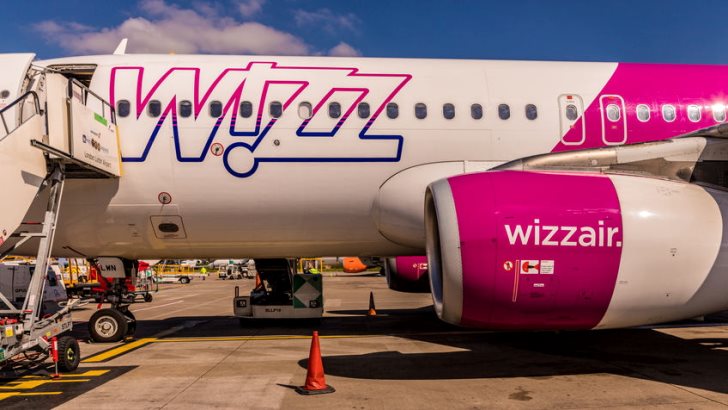
As the coronavirus pandemic began to unfold in the early months of 2020, so the global economy began to reel from the financial fallout that stemmed from impeded business operations worldwide. Moreover, governmental restrictions led to massive closedowns of national economies, and impaired movement of people.
In the wake of the recovery process, however, such containment measures are now being lifted, and people are being allowed to resume travelling, both at home and even abroad. Investors now have plenty of reasons to expect a gradual revival of the tourism and air travel industries in Europe, which were hit particularly hard. Some even hope that the market crash has already bottomed out, which would open up possibilities for value investing in low-cost airlines as they resume operations.
Even as the situation in Europe seems to be stabilising in terms of fewer recorded cases of COVID-19, the European air travel industry still has to grapple with a lot of obstacles. The uncertainty from a potential second wave still looms large over European economies, and thus the underlying circumstances could change drastically overnight. So, what seems to be the most likely scenario that companies such as Ryanair and Wizz Air have to consider over the next few months?
When the energy market crashed, OPEC ensured the gradual stabilisation of crude oil prices by reducing its overall output. Unfortunately for the air travel industry, however, such a strategy will be of little or no avail in this case. Even if all of the companies in the sector reach a joint accord to decrease the total number of flights each of them operates, they are likely to experience only a marginal boost in their revenue streams at best.
That is so because the subdued aggregate demand that is currently weighing down on the industry is not being prompted by an overabundance of flights that passengers can choose from. There are two prominent reasons as to why people are refraining from flying at present, including the remaining containment restrictions within the EU borders coupled with people's fears concerning the risk of contracting the virus.
That is why Ryanair, Wizz Air, EasyJet and the rest of the European airliners cannot hope to tackle the issue at hand in a similar fashion to the Oil Producing and Exporting Countries. Instead, each one of them has to resolve the matter of falling demand on its own, which sets the stage for a likely price war in the near term.
The cost of air tickets is likely to start falling as companies scramble to attract more customers by offering the most competitive prices in the industry, which could escalate to a full-blown price war if the aggregate demand continues falling. Typically, at times when the underlying competition in any given industry rises without a parallel surge in demand, the involved companies are eventually going to be thrown in a very tight spot.
In the case of the European air travel industry, even before the coronavirus crisis, airlines had to fill each flight as close to its maximum potential as possible, in order to operate at an efficient and cost-effective way.
Discussions concerning travel safety are currently being held in Europe, as the possibility of maintaining social distancing during flights is also being deliberated. If the EU Commission decides to pass on more rigid safety policy, airlines might be compelled to operate their flights at no more than 50 per cent of their maximum capacities. Such a course of action would squeeze companies' operational capabilities, even more, leaving them exposed to the market uncertainties.
In addition to these price-related woes for the companies, there are also more extrinsic risks. As was mentioned earlier, countries within the European Union are gradually starting to lift their containment restrictions, which would remove the legislative obstacles for passengers who can resume flying abroad. However, even with such an ease of access, these developments do not necessarily mean that flyers would immediately take it to the skies after several months in isolation.
There are two probable scenarios, which are in stark contrast to each other, that could illustrate the likely materialisation of these developments concerning the air travel industry in the foreseeable future. On the one hand, people might feel compelled to make up for the "lost" time in quarantine, by rushing to book holidays or minor trips somewhere abroad. If the underlying situation develops in such a way, the rapidly rising demand pressures will supersede the falling air ticket prices, resulting in a momentary misbalance in the market.
Airliners would then have to react promptly by raising their prices in such a fast-paced environment, leading to a sudden boom in the market. From the standpoint of basic economic theory, such a scenario would accommodate the first stable market equilibrium in post-pandemic Europe. That is so because of the rising demand, coupled with proportionately surging prices, both of which would lead to a sustainable outcome. However, the current conditions are quite tentative to make such forecasts with a high degree of certainty. And even if people react in a similar fashion, the air travel companies would still need time to respond accordingly with their price policies. In other words, even in such a best-case-scenario, the market would likely need several months to adjust itself into a stable equilibrium.
On the other hand, people might step out of the several-months quarantine more vigilant and less eager to travel. Fears of contracting SARS-Cov-2 could maintain the aggregate demand in the industry low, even as governments deem it suitable to ease their restrictions. This probable scenario manifests the worst-case-outcome for the industry, as it would prompt the air travel companies to reduce their charges even more. The end result would be deepened disequilibrium as the industry's overall market share takes a sizable dive.
In order for low-cost airlines to survive the struggle for reviving the industry, they would have to acknowledge the underlying risks stemming from a potentially protracted slump in aggregate demand. They would have to devise comprehensive pricing policies that draw maximum efficiency even at times when the market is contracting. But most importantly, they would have to adapt by squeezing their efficient operational capacities within the context of falling industry prices.




















